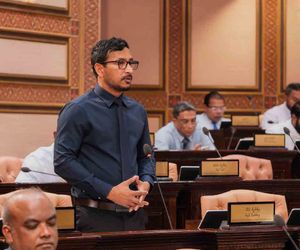Coral stone mosques: the last architectural masterpieces
The Maldives Independent spoke to renowned architect Mauroof Jameel following the publication of his book, “Coral Stone Mosques of Maldives, The Vanishing Legacy of the Indian Ocean.”

27 May 2017, 9:00 AM
“Coral Stone Mosques of Maldives, an exhibition introducing the last of architectural masterpieces with illustrations by Mauroof Jameel” opened at the National Museum last week.
The Maldives Independent spoke to the man behind the exhibition and the recently published book about coral stone mosques of Maldives, subtitled “The Vanishing Legacy of the Indian Ocean.” Mauroof Jameel is an architect specialising in architectural heritage. After restoring old mosques in Malaysia, he spent the past five years researching coral stone mosques in the Maldives.
The exhibition will reopen Sunday and welcome visitors until June 8.
Fathimath Isha: What made you want to do this exhibition on coral stone mosques of Maldives?
Become a member
Get full access to our archive and personalise your experience.
Already a member?
Discussion
No comments yet. Be the first to share your thoughts!
No comments yet. Be the first to join the conversation!
Join the Conversation
Sign in to share your thoughts under an alias and take part in the discussion. Independent journalism thrives on open, respectful debate — your voice matters.




